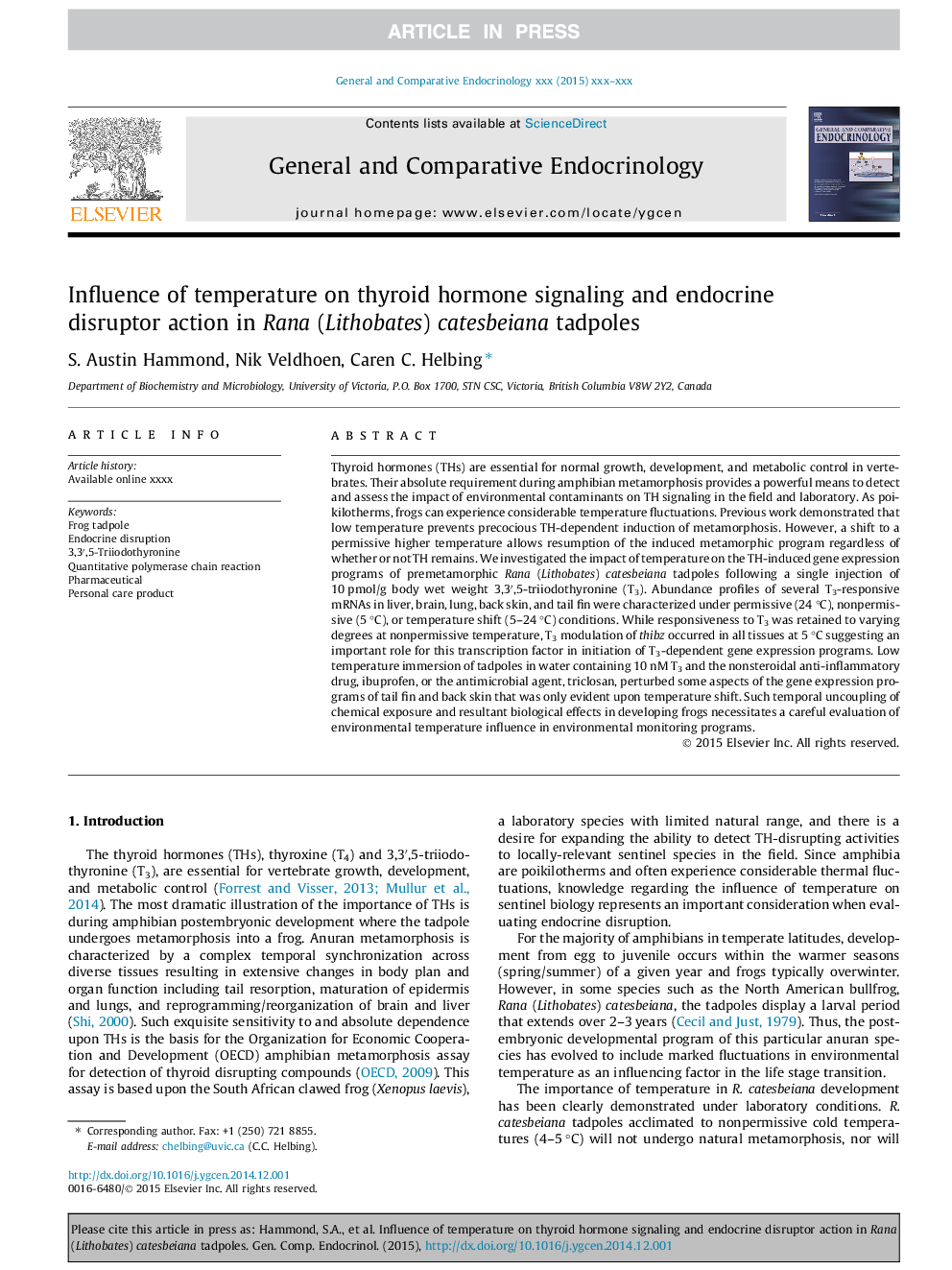| کد مقاله | کد نشریه | سال انتشار | مقاله انگلیسی | نسخه تمام متن |
|---|---|---|---|---|
| 5900967 | 1568887 | 2015 | 10 صفحه PDF | دانلود رایگان |
عنوان انگلیسی مقاله ISI
Influence of temperature on thyroid hormone signaling and endocrine disruptor action in Rana (Lithobates) catesbeiana tadpoles
دانلود مقاله + سفارش ترجمه
دانلود مقاله ISI انگلیسی
رایگان برای ایرانیان
کلمات کلیدی
موضوعات مرتبط
علوم زیستی و بیوفناوری
بیوشیمی، ژنتیک و زیست شناسی مولکولی
علوم غدد
پیش نمایش صفحه اول مقاله

چکیده انگلیسی
Thyroid hormones (THs) are essential for normal growth, development, and metabolic control in vertebrates. Their absolute requirement during amphibian metamorphosis provides a powerful means to detect and assess the impact of environmental contaminants on TH signaling in the field and laboratory. As poikilotherms, frogs can experience considerable temperature fluctuations. Previous work demonstrated that low temperature prevents precocious TH-dependent induction of metamorphosis. However, a shift to a permissive higher temperature allows resumption of the induced metamorphic program regardless of whether or not TH remains. We investigated the impact of temperature on the TH-induced gene expression programs of premetamorphic Rana (Lithobates) catesbeiana tadpoles following a single injection of 10 pmol/g body wet weight 3,3â²,5-triiodothyronine (T3). Abundance profiles of several T3-responsive mRNAs in liver, brain, lung, back skin, and tail fin were characterized under permissive (24 °C), nonpermissive (5 °C), or temperature shift (5-24 °C) conditions. While responsiveness to T3 was retained to varying degrees at nonpermissive temperature, T3 modulation of thibz occurred in all tissues at 5 °C suggesting an important role for this transcription factor in initiation of T3-dependent gene expression programs. Low temperature immersion of tadpoles in water containing 10 nM T3 and the nonsteroidal anti-inflammatory drug, ibuprofen, or the antimicrobial agent, triclosan, perturbed some aspects of the gene expression programs of tail fin and back skin that was only evident upon temperature shift. Such temporal uncoupling of chemical exposure and resultant biological effects in developing frogs necessitates a careful evaluation of environmental temperature influence in environmental monitoring programs.
ناشر
Database: Elsevier - ScienceDirect (ساینس دایرکت)
Journal: General and Comparative Endocrinology - Volume 219, 1 August 2015, Pages 6-15
Journal: General and Comparative Endocrinology - Volume 219, 1 August 2015, Pages 6-15
نویسندگان
S. Austin Hammond, Nik Veldhoen, Caren C. Helbing,